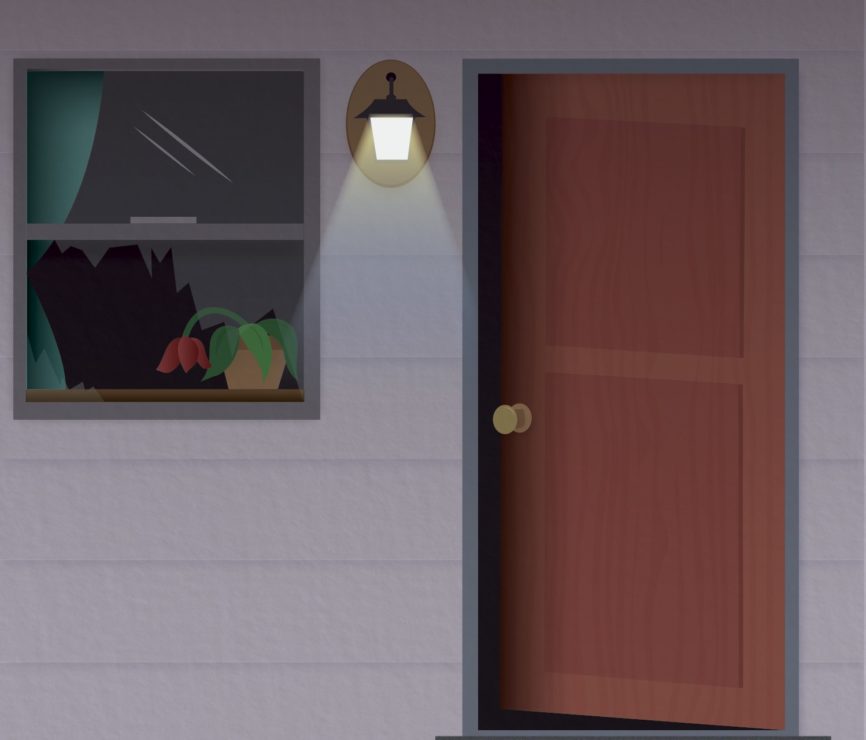12 years after Oak Bay’s worst murder, domestic violence remains a pressing issue

This story discusses issues and events that may be difficult for some people to read, involving murder, family trauma, and domestic violence. Although this article focuses on a family in Oak Bay, it’s important to recognize that domestic violence disproportionately impacts Indigenous women, poor women, and queer and trans people.
Back in 2007, Greg Phillips was selling a home in Oak Bay when a tragic murder required him to pull the house off the market. Nestled near King George Terrace, and valued at over $1.7 million today, the house seemed perfect.
But if walls could talk, they’d tell a far from perfect story.
Like many homes, domestic violence was a reality seen only behind closed doors. Many of the support options seen today for domestic violence are a result of the recommendations from the case from that house on King George Terrace, where Peter Lee murdered four of his family members before taking his own life.
Although there has been greater community support and coordination for domestic violence victims since this incident in 2007, the amount of family-violence cases in Victoria have actually risen in the last five years.
We all have a role to play in preventing all forms of gender based violence, one of those being to familiarize yourself with the support available. This is an extreme case, but it goes to show that tragedy can happen when cases fall through the cracks in a multitude of systems.
This case is one of the bloodiest murders in Victoria’s history. As much as it is shocking, it’s also confusing how this woman and her son slipped through the cracks of a broken system. All the warning signs were there, but none of them were heeded — resulting in tragedy.
The King George Terrace tragedy
While on bail for domestic violence charges, Peter Lee breached multiple court orders and broke into his former home in September 2007. He stabbed his six-year-old son Christian, wife Yong (Sunny) Park, and in-laws Kum Lea Chun and Moon Kyu Park.
Warning signs were present months before. Park planned to leave her husband, and told multiple police departments that her husband was violent and angry with her for leaving him. But without coordination between the departments, all her complaints were treated as isolated incidents.
Lee went to a men’s therapy group at a local nonprofit. Although the staff thought he seemed odd, they didn’t think there was cause for alarm.
Later, that July, Lee’s SUV swerved off the road and hit a telephone pole. His wife was in the back seat, without a seat belt. While being treated at the hospital for her minor injuries, she told police her husband had crashed the car intentionally, after Park told Lee she planned to leave him. She said he was abusive and threatening.
Lee was found guilty of staging a car crash that left his wife injured.
In an interview with the police just five weeks before she was murdered, Park told police she was worried her husband would kill her and her family because he had threatened to do so repeatedly and constantly carried a knife around.
Still, Lee was released on $5 000 bail in August 2007, under the conditions that he not contact his wife, visit their family home, or possess weaponry.

Between August and September, there were multiple incidents where Park reported her husband had breached his bail conditions, but no charges were laid against Lee.
At around 3 a.m. on that September morning in 2007, police responded to a 911 call from a house near King George Terrace. Inside, Lee was found dead along with his son, wife, and two in-laws.
The house was for sale, but was abruptly taken off the market. In 2009, the house sold after Phillips was contacted by the family’s estate. He was open about the home’s history, despite having no legal obligation to be, and ended up selling it for $200 000 below what it was originally listed for.
After completing an inquest into the murders and suicide, B.C.’s then-assistant deputy attorney general Robert Gillen said he hoped this case would create change.
Falling through the gaps of a disconnected system
This 2007 murder had all the warning signs — the most notable being a history of domestic violence and concerning threats against Park.
Mary Ellen Turpel-Lafond was B.C.’s Representative for Children and Youth at the time. In a report following the murder, Turpel-Lafond reccomended the province create a co-ordinated and comprehensive approach to domestic violence.
“If the many professionals involved in Christian’s life had the benefit of all available information, a clear picture would have emerged that this boy and his mother were in grave danger without an adequate safety plan,” Turpel-Lafond said, in an article for Victoria News.
The Coroner’s Inquest that followed made several recommendations, but was told by the then-B.C. Liberal government that there wasn’t a budget to address domestic violence. The two central recommendations were to conduct risk assessments before someone is released on bail and impose stricter bail conditions, especially on people without a fixed address.
Some gaps filled, but the amount of cases of domestic violence remains high
In both the car crash and the murder, four different police departments were involved. After this case, a Domestic Violence Unit for the Capital Regional District was created.
Domestic violence is defined by the Regional Domestic Violence Unit as “physical or sexual assault, or the threat of physical or sexual assault, by one partner against the other partner with whom they have or have had an intimate relationship whether or not they are legally married or living together at the time of the assault or threat.”
In their work, they coordinate among the Capital Region’s various police services to provide intensive victim support for high-risk cases, along with various other duties like performing risk assessments and educating and training people working with victims.
From 2008 to 2018, 945 people were victims of intimate partner homicides in B.C. This rate, of 10 people a year, hasn’t changed since 2004. The majority of these cases are women, and Indigenous women experience domestic violence at a rate double that of non-Indigenous women.
In Victoria in 2018, Statistics Canada indicates that there were 409 cases of police-reported violence. Nearly a third (128) of those cases were family violence. All of the statistics around case numbers are likely low, as less than one in five people who experience family violence actually report it to the police.
The previous government, under Christy Clark, created a three-year $5.5 million domestic violence plan in 2014.
In 2019, Parliamentary Secretary for Gender Equality Mitzi Dean announced the government’s plan to create the Women’s Transition Housing Fund and invest $18 million over three years into other counselling and support. This year, the government introduced legislation to provide five additional days of paid leave for people experiencing domestic violence.
Although their commitments to changing the paid leave policy are notable, the current B.C. NDP government has not published a report on domestic violence and currently, there is not a comprehensive provincial approach.

There have been significant changes since 2007 in improving the support available for victims of domestic violence in Victoria, and in B.C. The number of police-reported cases of family violence in Canada, however, have actually risen slightly in the last five years. This might be a result of the #MeToo movement breaking some of the stigma about speaking out and getting help for instances of sexualized violence.
Combating gender-based violence
Many organizations, such as the Anti-Violence Project (AVP) at UVic, End Violence B.C., Victoria Sexual Assault Centre, and the Domestic Violence Resource centre provide a myriad of supports and resources.
AVP strives to educate students about gender-based violence. If you’re looking for information about consent, seeking help, or on how to support someone else, this is definitely the best place to start.
AVP hosts consent workshops and a men’s circle throughout the year. Their office is in the basement of the SUB, along with their support room where AVP staff and volunteers are available and people can access free tea, books, and blankets.
Their website also links to over 20 other different support organizations on campus that are not specific to violence, like the Students of Colour Collective (SOCC) and UVic Counselling Services.
Aside from accessing support, there are things everyone can do to combat gender-based violence like educating ourselves about consent, avoiding terms or language that may incite hate towards a specific group, and respecting the boundaries and wishes of people in our lives.
The house on King George Terrace looked like any other house from the outside. Although people and families may seem fine, they might not be.
Being kind and respectful to one another can go a long way, and could potentially help someone out who needs it. We can all contribute by reaching out to friends who are struggling and by familiarizing ourselves with the community support available on campus and in Victoria.
If you are in immediate danger, call 911. The Vancouver Island Crisis Line is open 24 hours and can be reached at 1 (800) 784-2433, and the Sexual Assault Response Team (SART) can also be accessed at that number. For information about services available throughout B.C., you can call VictimLink BC at 1 (800) 563-0808 or visit the government’s domestic violence website.








